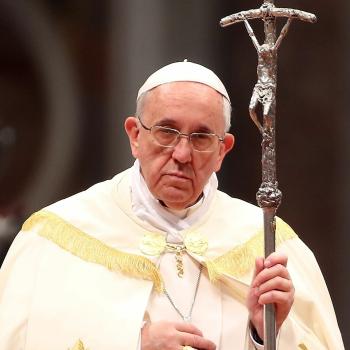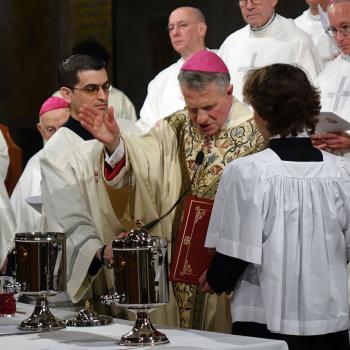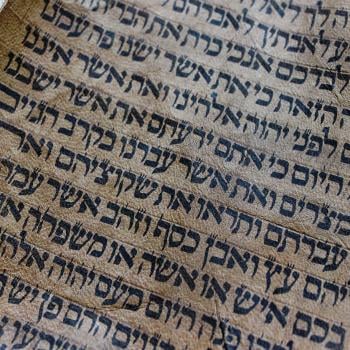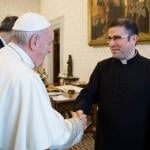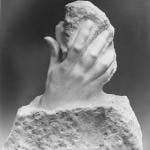The book of Jeremiah is a book filled with tragedy, beauty, and redemption. Jeremiah 29 takes place after the exile of the people to Babylon. In 597 B.C., the king Jehoiachin surrendered to the conquering Babylonian empire and the nobility were exiled to Babylon[1]. To fully understand the context of Jeremiah 29 it is helpful to look back to chapters 27 and 28. Those chapters discuss the judgment of false prophets who were spreading lies. This theme continues in chapter 29 as false prophets appeared to the exiled people and were spreading false information about the length of the exile[2].
The background of the text is one of the themes of the Old Testament. The people of Israel strayed from the covenant they made with God time and again. Now the time has come for punishment, but there is hope. In fact, Jeremiah 29 is one of the most hopeful passages in scripture. This message of hope continues in chapter 30-33 with a promise of a return to the land after the time of exile was over[3].
The contents of the chapter take place via a series of letter from Jeremiah to the exiles, and the exiles writing back. Withing these verses we see the prophet encouraging the exiles to raise their families, grow gardens, be fruitful citizens, and work for the benefit of the land they are in. The chapter is a refutation of false teachers and prophecy, an urging to be a good witness to non-believers, and trusting in the promises and mercy of God. God is faithful to his promises and this gives us strength to endure in the present[4].
Jeremiah Writes To The Exiles
Chapter 29 of the book of Jeremiah starts off a little differently than other chapters. In verse one we are treated to a description to whom this letter is written. It is written to the priests, elders, and prophets who were exiled in Babylon. Right away we see that some were left behind in the homeland, and Jeremiah was among those who were left behind. It was a common practice in the ancient near east to deport the leaders of a city of country for better control over the region. A vivid description of those who were deported is recorded for us in 2 Kings 24:10-17.
This communication of three letters that takes place in Jeremiah 29 also shows that communication was allowed between the exiled and those who remained[5]. There were a couple ways that this communication would have occurred. One way was utilizing a merchant that was traveling on established trade routes. The other, and perhaps the most common, was through Babylonian officials who were traveling back and forth on official business[6].
In Jeremiah 29:2 we are told who was taken into exile and it corroborates what is seen in 2 Kings 24:10-17, but with one exception. This passage tells us that the metal workers and craftsman were also taken to Babylon. This is an interesting annotation, after all it wouldn’t Jerusalem need some of these skills for upkeep and routine maintenance? King Nebuchadnezzar was smart and took these skilled craftsmen to Babylon so those left in Jerusalem would not be able to manufacture weapons[7]. This was done to prevent and uprising.
Who carried this letter from Jerusalem to Babylon? In verse three we are given the answer as it was carried by “Elasah the son of Shaphan and Gemariah the son of Hilkiah” (Jer. 29:3a). Not much is known about these two individuals, but we get some clue back in chapter 26. The Shaphan family, of whom Elasah was part, and was influential in upholding the reforms of King Josiah[8]. An inscription of Anikan, the brother of Elasah, was found on a seal from the time of Jeremiah. Since they were supporters of the reforms of King Josiah, they would have also supported the work of the prophet Jeremiah. Gemariah is an individual of whom not much is known, but there is a clue in 2 Kings. In 2 Kings 22:4 we read, “Go up to Hilkiah the high priest, that he may count the money that has been brought into the house of the Lord, which the keepers of the threshold have collected from the people” (ESV). Hilkiah was the high priest during the time of King Josiah and was also sympathetic to the message of Jeremiah. There is a Gemariah that is mention in Jeremiah 36:10, but this is not the same individual[9].
Though it was commonplace for delegations to be allowed to communicate, there is the question as to why. In modern warfare it is a common strategy to divide and conquer. However, Jeremiah 29 makes it clear that those in exiles were not slaves. They were allowed to communicate and keep informed of what was happening in Judah. Likewise, King Zedekiah was not allowed to forge those who were in exile. Since there was regular communication, this encouraged cooperation from King Zedekiah to pay tributes and loyalty to Babylon because of those who were exiled there[10].
Jeremiah And The Call To Live
Beginning in verse four he contents of the letter from Jeremiah are introduced. The authority of the Lord is called on in verse four, so the recipients know that the words are from Yahweh, and not just a matter of friendly correspondence. The contents of the letter must have been shocking to the recipients as it asked for cooperation with their Babylonian captors. The letter encouraged the people to raise families, build homes, grow gardens, and work for the prosperity of Babylon (Jer. 29:5-7)[11].
This message was practical in many ways. First and foremost, it was an acknowledgement that the Lord had acted through Nebuchadnezzar to punish the people for their disobedience. It was the will of Yahweh that they were there[12]. Secondly, just because they were in exile did not mean that they no longer had a mission. Yes, they were being punished for sin and disobedience, but they still had a responsibility to show the truth of the true God to a pagan nation. To accomplish this Jeremiah tells the people to settle down and live their lives. Not only live their lives for themselves, but to pray to the Lord for the benefit of those around them[13]. Throughout the Old Testament the people of Israel were called to be a light to the nations, and this would continue even in exile in Babylon.
Furthermore, Jeremiah writes and tells the people to marry and to make sure their sons and daughters marry. They are commanded to increase in population and not decrease. As the Lord commanded Adam and Eve to be fruitful and multiply in Genesis 1:28, he tells the people in Babylon to do the same. It should not come as a surprise that Jeremiah mentions planting gardens and enjoying the produce. Babylon was, and still is in some respects, known for its gardens. They symbolized the blessings and abundance of the gods, and they provided for vital income in trade of produce and even leather[14]. The gardens that the Jewish people would grow in Babylon would symbolize the same, as would an increase in descendants. However, agricultural fruitfulness (i.e., the gardens) symbolize something much more than food or goods. It is a sign of covenant renewal[15].
Jeremiah On Not Being Deceived
In these modern times we are living in, it is hard to imagine what it is like to be taken away from our home. The people of Israel entered into the long-awaited promised land as is read in the book of Joshua. Yet, time and again, they transgressed against the covenant that they had with Yahweh. As a result, they were delivered into the hands of the Babylonians, and since they were the enemy there were some who rebelled. However, they did not only rebel against the Babylonians, but against God since the Babylonians were his chosen instrument. Jeremiah 29:7-9 starts to lay this out as Jeremiah tells the exiles not to believe the false prophets that have risen up among them.
There is a possibility that there was some level of political duress in Babylon, and some saw it as a sign that the exile would be short. However, as previously mentioned, Jeremiah wrote telling them to be fruitful and make themselves at home. In essence he was telling them this to dispute the theory that the exile would be short[16]. What the false prophets we telling the people was contrary to what is being told by Jeremiah. Clearly one side is right and the other is wrong. These false prophets were encouraging the people to be uncooperative, political unrest, and wishing for the destruction of Babylon. Even in exile they were being disobedient, and since they were saying something contrary to God their fate is sealed[17]. This confrontation would escalate in Jeremiah 29:15-32.
This motif of good and bad prophets brings to mind and earlier account in Jeremiah 24. In that Chapter Jeremiah is shown two baskets of figs, with one being good and one being bad. The exiles are the good figs as they are destined for good, while Zedekiah and the false prophets would fall under the bad figs[18].
A Long Exile
Jeremiah 29:10 does not only specify the length of the exile but is about the salvation of the people. It begins one of the most hopeful sections in all of scripture as 29:10 the Lord says He will visit, and 29:14 says He will bring the people home[19]. In Jeremiah 28 the false prophet Hananiah predicted that the exile would only last two years. He contradicted what was being said by Jeremiah, and the false prophets in Babylon were doing the same[20]. Jeremiah 29:10 tells us that the time of the exile will be seventy years. What is interesting is what comes after the period is given. Jeremiah writes that “when the seventy years are completed for Babylon” (Jer. 29:10a).
This number is not arbitrary and is saying that the exile will last for roughly three generations[21]. Moreover, this period of seventy years would be about the year 520, which is about ten years before the Persian empire would conquer Babylon. The Persian empire would give the order to rebuild the temple in Jerusalem and send the people home. The Lord will visit the righteous remnant, and he will lead his people home after this seventy-year period[22]. It is a display of the initiative of God with his people as He will “visit them”. The Hebrew word used for this phrase is a call to action. It is a call to action to pay attention, recognize what has been happening, and a call for a genuine conversion of heart[23].
A Call To Hope
One of the most hope filled passages in scripture in Jeremiah 29:11. It is a beautiful passage of scripture, and though it is used in an erroneous way by most, we see the mercy of God and the love He has for His people. God a has a plan, and if the people submit to Him and his plan it will all come to fruition[24]. Jeremiah 29:11 states, “For I know the plans I have for you, declares the Lord, plans for welfare and not for evil, to give you a future and a hope” (ESV). This passage will become the centerpiece for Jeremiah 30-33 which is known as the book of consolation.
As previously stated, the passage is one of hope. This hope is reiterated with a literary device known as an inclusio. This device uses the same, or similar, words at the beginning and end of a unit to drive the point home[25]. This promise of a future and hope is somewhat lost in the English language. It is the language of shalom, a perfect peace that can only be found in God[26].
Seek And Find
The message of hope continues in Jeremiah 29:12-14. Jeremiah has written the words of hope, the perfect shalom, that came from the Lord. The Lord tells the people to seek him, and he will be found. In verse twelve the Lord tells the people to call upon his name. Of course, this is much more than simply saying the name of Yahweh. The people are to turn to him with all of their heart, worship him in prayer, and with a new heart that is changed by God[27]. This verse is important because in Jeremiah 11:14 the Lord told Jeremiah not to pray for the people because he would not listen to their prayers. That was the result of a broken covenant between God and the people, but Jeremiah 29:12 renews the communication. In being restored, the people can once again pray to the Lord and their petitions will be heard[28].
The verse that follows requires a little more explanation. The passage in question is Jeremiah 29:13 which states, “You will seek me and find me, when you seek me with all your heart” (ESV). Initially there is a carryover from verse twelves as the Lord says if you seek you shall find. The word translated as “when” has the potential to mean a couple different things as it is a Hebrew participle. There is a temporal option as the Lord will be found temporarily, or the causal which is more permanent. The people will find God because they are seeking him[29]. The word used for “heart” in verse thirteen requires an understanding of ancient Jewish forms. The heart was much more than the organ that pumps blood to the rest of your body. It is what the Jewish people called the seat of volition and it is where one chose to obey God or not. Choosing to seek the Lord is a heart changing proposition, and it is there where he can be found[30].
Verses thirteen and fourteen have aspects of parallelism which link the two together. This is seen with the use of the phrases “you will seek” and “you will find”. However, the parallelism that us seen in verse fourteen adds to the previous verse[31]. In verse fourteen the Lord promises to restore the fortunes of the nation of Israel. This passage speaks of the land and all will be brought from the nations that they had been driven to. The word “driven” in verse fourteen is one of the keys to a proper exposition of this verse. It is the Hebrew word nadah, and it is used by Jeremiah and Ezekiel to describe the people going into exile. However, it goes deeper and denotes that the reason for exile was divine judgment because of disobedience[32]. This verse also reflects the language and diction used in Deuteronomy 4:29 where Moses is telling the people to seek the Lord with all their heart and soul[33].
The Lord Will Bring Judgment
After an inspiring message of hope, Jeremiah turns to the false prophets in Babylon. Initially it seems that Jeremiah is quickly changing the subject to bring up a topic of doom and gloom, but this is not the case. The false prophets were predicting a quick return to their homeland, but there is only one true prophecy[34]. Jeremiah 29:15-23 describes the Lord pursuing the false prophets with famine and sword[35]. There was a message of hope and that stands, but there is also pronounced judgment on those who have led people astray.
Here we get two of these false prophets mentioned by name. This happens in Jeremiah 29:21, where the text states, “Ahab the son of Kolaiah and Zedekiah the son of Maaseiah” (ESV). Beyond this mention we know nothing more than they were saying false words in the name of the Lord and that Nebuchadnezzar burned them in the furnace[36]. We do know that Ahab was not the king mentioned in 1 Kings, and that Zedekiah was not king Zedekiah. We also know that they were spreading false prophecies which was punishable by death under the Torah[37]. Though capital punishment was not carried out by Jewish authorities, it carried out by Nebuchadnezzar. While it is not clear why the king had them killed, it can be assumed it was because of political insurrection. These false prophets were predicting that the restoration was imminent and telling people not to cooperate with Babylonian authorities.
In the end the suffered the fate that false prophets before them di, which was death. The people were punished because they had not believed the true prophets that the Lord had sent time and time again. The end of Jeremiah 29:23 reads, “I am the one who knows, and I am witness, declares the Lord” (ESV). Though these false prophets though they were getting away with their lies, their heart was known to God. The Lord was a witness to their actions. The word “I” in this passage is emphatic and each phrase is meant to reinforce the other[38].
The death of these two false prophets would be used as an example in Babylon. The text says they were burned in the fire, but technically the word means “roasted” and was a much more painful fate. Among the exiled the names of these two false prophets would be the object of a curse[39].
Shemaiah’s False Persecution
Another false prophet to the exiles appears in Jeremiah 29:24. We are told that his name is Shemaiah of Nehelam. Shemaiah wrote a letter to the temple priest in Jerusalem asking that Jeremiah be put in stocks and censured. The reason for this is because of Jeremiah stating that the exile would be long compared to what he had been prophesying[40].
We do not know much about this figure, but we do know there is no relation to the figures of the same name mentioned in the books of Nehemiah or 2 Chronicles[41]. What we do know is that he further disrespects the prophet of God by calling him a madman (Jer. 29:26). In Jeremiah’s time this charge was serious, and one could go to prison. Prison time is nothing new for Jeremiah as he had been imprisoned for speaking the words of the Lord previously. We can read this in Jeremiah 20:1-2 which states, “Now Pashhur the priest, the son of Immer, who was chief officer in the house of the Lord, heard Jeremiah prophesying these things. Then Pashhur beat Jeremiah the prophet and put him in the stocks that were in the upper Benjamin Gate of the house of the Lord” (ESV). Shemaiah wrote the letter to Zephaniah the son of Maaseiah who was a priest, but at the very least an official of the temple. Doing this was a break in protocol and Zephaniah did not take the letter very seriously[42].
Zephaniah Reads The Complaint
The letter that Shemaiah wrote reached its intended destination. What is interesting is that Zephaniah read the letter to Jeremiah (Jer. 29:29). This indicates that Zephaniah was friendly with Jeremiah, or at the very least he was a supporter of his mission[43]. The sequence that follows is the third letter that makes the rounds in Jeremiah 29.
Jeremiah responds with the words of the Lord, but does so in a tone and diction that emphasizes the extreme displeasure of the Lord. Shemaiah not only lied to the people about Jeremiah, but he persuaded others to trust in the lies that he was propagating. If it was only him believing and saying this it would have been bad enough, but he corrupted the minds of those around him and they started spreading the lie (Jer. 29:31)[44]. This is indicated by the causation of the verb.
What is the punishment for this crime? After all the other two false prophets were roasted in the furnace by Nebuchadnezzar. Verse 32 gives us the answer as Jeremiah 29:32 states,
Therefore, thus says the Lord: Behold, I will punish Shemaiah of Nehelam and his descendants. He shall not have anyone living among this people, and he shall not see the good that I will do to my people, declares the Lord, for he has spoken rebellion against the Lord (ESV).
The false prophet will be deprived of any descendants beyond those who are already living[45]. In our modern world we lose the seriousness of this as scripture says children are a heritage (Ps. 137:1). To not have a child during this time would mean that you were cursed, and essentially this was the price for lying against Jeremiah and against the Lord. This was a steep price to pay, but the wages for his sin would get a bit higher. He and his family will die in exile and will never see the promised land again.
Theological Reflection
Chapter 29 of the book of Jeremiah has many things to take from it from a theological point of view. The first thing we can take from it is the way that prophecy can be transmitted. The Hebrew word sefer is one that is translated into English as “book”[46]. However, the English rendering, as sometimes happens, loses the full sense of the word. In Hebrew the word means a “document, letter, or scroll”[47]. This is important because sometimes we look to scripture in its neatness and think it was always contained within a scroll or codex. For the most part this is true, but in Jeremiah 29 we see it communicated via three letters that were exchanged from Judah to Babylon and back again. The Lord communicates his words in a variety of ways and this chapter in Jeremiah is a reminder of that. It is a prophetic missive that brings flexibility to an otherwise traditional method of communication[48]. It is important to not paint the Lord into a theological box. This is not to say that we ignore how God has revealed himself. That would be foolish, but the Lord also gives several examples through scripture of communicating, and doing things, in a way that is out of the ordinary.
The false prophets in this chapter prove this point in a unique way. The people of Israel were chosen by God and the Lord made many covenants with them, but most notably the Mosaic on Mount Sinai. The book of Deuteronomy 28-30 outlines the blessings for following the law of God as well as curses for not doing so. In addition to these, it also shows the renewal of the covenant and the prosperity that comes from turning to the Lord.
The people of Israel essentially took the Lord for granted and knew that he would always be there. Going through the Old Testament it is easy to see a familiar, but sad trend emerges. This trend is beginning to be seen is Exodus 32. The story of the Golden calf is familiar, but what does it have to do with Jeremiah 29? What we read in Jeremiah 29 happens as a result of idolatry. They fell into the sin of idolatry over and over again, but it was not always a Golden calf. Sometimes it was child sacrifice to Molech as Jeremiah describes in Jeremiah 7[49]. Despite this horrific practice, and even having an open-air shrine, the Lord provides hope.
This is something that we can look to in our own lives. Like the Israelites, we have repeatedly sinned and committed idolatry in one form or another. Yet there is hope, and this hope begins in the Old Testament and is fulfilled in the New in the person of Christ[50]. This hope begins in Jeremiah 29:11, continues to the book of consolation in Jeremiah 30-33, and to Christ himself.
Christ quotes the prophet Jeremiah more than any other. There is a unity in scripture that is fulfilled in the divine logos[51]. We see this especially at play in the Gospel of Matthew. Matthew wrote to a Jewish audience, described Jesus as a new Moses, and in Chapter 16 he brings Jeremiah to the forefront. There are two other inferences to Jeremiah as one is at the beginning in the birth narratives, and the other is at the end of the life of Christ[52].
Jeremiah 29:10-14 is the most hopeful passage that is seen in the chapter. It is a promise of hope, and yet it is one that is often taken out of context on an almost daily basis. This is about the restoration and the new covenant that is forthcoming[53]. Jeremiah 29:13 describes the Lord telling the people to seek him and he will be found. Jesus essentially says the same thing in Matthew 7:7.
There are many parallels between Jeremiah and Jesus such as both being rejected, they fear the fate of the people, and in different ways God left the Temple. However, there is another connection that may go unnoticed, but it has to do with the Great Commission from Matthew 28. This passage is memorable as they are the last words of Jesus before his glorious ascension. He tells his disciples to go to the ends of the earth teaching everything that they had been taught. This was not a command to stay in their neighborhood and to talk about Jesus with their friends, but it was a call to action. It was a call to get uncomfortable, go somewhere you may not want to go, and spread the Gospel. In Jeremiah 29:5 Jeremiah writes something similar, but not in so many words. He tells the Jews in the diaspora to build and plant among the people of Babylon[54]. By doing this the people were able to testify to the goodness and mercy of God though they were deported to Babylon. This is seen playing out in the book of Daniel where Shadrach, Meshach, and Abednego refuse to worship the golden statue. By not doing so they were thrown into the furnace, just like the false prophets in Jeremiah 29, but unlike them a theophany occurs, and Christ is among them. Many converted from there witness and it started with Jeremiah imploring them to live their lives, worship, and plant.
Application of Jeremiah 29
From an application standpoint there is much that can be learned from this passage. Some it falls into the spreading of the good news that was mentioned in the previous section. However, there is the deeper understanding that God’s time is not our own. There is a tendency to want instant gratification. This was the same phenomena that happened in Jeremiah’s time. False prophets arose and tickled the ears of the people. This happens today, and as teachers of the Word we will be held accountable for how we convey the message. Are we telling the truth, no matter the consequences? Or are we saying what people want to hear no matter how much damage it may cause?
Like Jeremiah, we should want to do the will of God no matter what it may cost or how unpopular it is. This includes how we live. From Jeremiah 29 we learn the timeless of truth of blooming where you are planted. There is a reason that the Lord has us where we are. Like the Israelites in Babylon, we continue to raise our families, be witnesses of the Lord at work, and in our daily lives. We show those around us our faith, not by words alone, but also backed up by our actions.
Previously it was mentioned that teachers of scripture are held to a higher standard. This is mentioned in James 3:1-2, but we see it play out in dramatic fashion with the false prophets mentioned in Jeremiah 29. From this we learn the value and necessity of true teaching. One need not speak for God on an issue that God does not approve. Likewise, one may not twist the t lesson about lying to others about what the words of God are.
Integration
How does Jeremiah 29 fit in with the rest of the book of Jeremiah? The short answer is that it is the turning point. It is the turning point from judgment, to hope, and finally to the nations being judged. More importantly the seeds of the New Covenant of planted and come into full bloom in the subsequent chapters.
Up until this point Jeremiah points out how the people have no desire to continue the reforms of King Josiah. As a result, they lost their prize which was the covenant they had with Yahweh. Time and again Yahweh warned them through Jeremiah, but time and again it was ignored. They sought to be like the nations around them and participated in some of the same pagan practices. They sacrificed their children at Tophet (Jer. 7), were guilty of adultery (Jer. 5), and slander (Jer. 9). Jeremiah became enraged and threw down pottery in Jer. 19 to signify the fate that awaited them from Babylon. Things got so bad that the Lord told Jeremiah that he would not here the prayers of the people. His mind was made up and the people had to learn a lesson.
Though the people were exiled in Babylon, the Lord speaks through Jeremiah and tells them to plant gardens (Jer. 29:5). The garden was a big part of Mesopotamian agriculture. Previously, the people wanted to be like their neighbors around them. Here they were being told to plant a garden just like the nation in which they were now living. A similar adaptation of building and planting occurs with the call of Jeremiah in Jer 1:10, but it is also the opposite of the curses given for not following the law in Deuteronomy 28-30[55].
With this in mind Jeremiah 29 integrates in a vital way with the rest of Jeremiah’s prophetic message. Through all the filth and vile that the people brought on themselves there is hope. Previously it was the letter of the law that was, or was not, being followed. However, the heart was not changed. After the appointed time the covenant will be renewed, prayers will be heard again, and the people will seek the Lord.
Seeking the Lord will be different than before as it will not happen as a condition of the promise, but it will be part of the promise[56]. This is integral because it shows that the Lord does not break his promise, but like a loving father disciplined his children. A new covenant will come that will be written on their heart and they will strive to live it not because they have to, but because they want to. Jeremiah 29 is the canonical hinge that opens the door from the Old Covenant to the New.
Bibliography
Alter, Robert. The Hebrew Bible: A Translation With Commentary. 2. New York: W.W. Norton & Company, 2019.
Barry, John D., David Bomar, Derek R. Brown, Rachel Klippenstein, Douglas Mangum, Carrie Sinclair Wolcott, Lazarus Wentz, Elliot Ritzema, and Wendy Widder. The Lexham Bible Dictionary. Bellingham, WA: Lexham Press, 2016.
———. The Hebrew Bible: A Translation With Commentary. 2. New York: W.W. Norton & Company, 2019.
Benson, Bruce Ellis. The Phenomenology of Prayer. New York: Fordham University Press, 2005.
Boda, Mark J. The Heartbeat of Old Testament Theology: Three Creedal Expressions. Grand Rapids: Baker Books, 2017.
Bullard, Roger A., and Howard A. Hatton. Song of Songs. Handbooks. New York: United Bible Societies, 2004.
Callaway, Mary. Jeremiah through the Centuries. Hoboken, NJ: John Wiley & Sons, Inc, 2020.
Carmen Joy Imes. Bearing God’s Name: Why Sinai Matters. Downers Grove: IVP Academic, 2019.
Charles, F. Pfeiffer. The Wycliffe Bible Commentary. Nashville: Southwestern Company, 1962.
Clements, Ronald E. Jeremiah: Interpretation: A Bible Commentary for Teaching and Preaching. Louisville, KY: Presbyterian Publishing Corporation, 2011.
Cohen, Chaim, Victor Avigdor Hurowitz, Avi M. Hurvitz, Yochanan Muffs, Baruch J. Schwartz, and Jeffrey H. Tigay, eds. Birkat Shalom: Studies in the Bible, Ancient Near Eastern Literature, and Postbiblical Judaism Presented to Shalom M. Paul on the Occasion of His Seventieth Birthday. University Park: Penn State University Press, 2008.
Collins, John J. Introduction To The Hebrew Bible. Minneapolis: Fortress Press, 2004.
Crouch, C. L. “Migration, Political Power and the Book of Jeremiah.” Political Theology: The Journal of Christian Socialism 19, no. 6 (2018): 457–59.
——— Dobson, Edward G., Charles L. Feinberg, and Edward E. Hindson. King James Version Bible Commentary. Vol. 16, The New American Commentary. Nashville: Thomas Nelson, 2005.
. King James Version Bible Commentary. Vol. 16, The New American Commentary. Nashville: Thomas Nelson, 2005.
Dobson, Edward G., Charles L. Feinberg, and Edward E. Hindson. King James Version Bible Commentary. Vol. 16, The New American Commentary. Nashville: Thomas Nelson, 2005.
Dockery, David S., ed. Holman Concise Bible Commentary. Nashville, TN: Broadman & Holman Publishers, 1998.
Duvall, J. Scott, and J. Daniel Hays. The Baker Illustrated Bible Background Commentary. Grand Rapids: Baker Academic, 2020.
Harris, R. Laird, Gleason L. Archer Jr., and Bruce K. Waltke, eds. Theological Wordbook of the Old Testament. Chicago: Moody Press, 1999.
Hays, J. Daniel. Jeremiah and Lamentations. Grand Rapids: Baker Books, 2016.
Holladay, William L. Jeremiah 2: A Commentary on the Book of the Prophet Jeremiah, Chapters 26-52. Edited by Hanson Paul D. Minneapolis: 1517 Media, 1989.
———. Huey, F. B. Jeremiah, Lamentations. Vol. 16, The New American Commentary. Nashville: Broadman & Holman Publishers, 1993.
Holladay, William Lee, and Ludwig Köhler. A Concise Hebrew and Aramaic Lexicon of the Old Testament. Leiden: Brill, 2000.
Jeremiah, Lamentations. Vol. 16, The New American Commentary. Nashville: Broadman & Holman Publishers, 1993.
John, J. Sanctified Vision: An Introduction To Early Christian Interpretation Of The Bible. Baltimore: Johns Hopkins University Press, 2005.
Knowles, Andrew. The Bible Guide. 1st Augsburg books ed. Minneapolis, MN: Augsburg, 2001.
Lalleman, Hetty, and Lalleman-De Winkel. Jeremiah and Lamentations. Illinois: InterVarsity Press, 2013.
Lasor, William, David Hubbard, and Frederic Bush. Old Testament Survey: The Message, Form, and Background of the Old Testament. Believers Church Bible Commentary. Grand Rapids: William B. Eerdmans Publishing Company, 1996.
Lundbom, Jack R. Jeremiah among the Prophets. Havertown: James Clarke Company, Limited, 2013.
Mangum, Douglas, Derek R. Brown, Rachel Klippenstein, and Rebekah Hurst, eds. Lexham Theological Wordbook. Lexham Bible Reference Series. Bellingham, WA: Lexham Press, 2014.
Martens, E. A. Jeremiah. Believers Church Bible Commentary. Scottdale, PA: Herald Press, 1986.
Moore, Phil. Straight to the Heart of Jeremiah and Ezekiel: 60 Bite-Sized Insights. Chicago: Lion Hudson LTD, 2021.
Mueller, Joseph W. “Planting Gardens: Mesopotamian Influence on a Hebrew Trope in Jeremiah 29.” Journal for the Study of the Old Testament 45, no. 2 (December 2020): 268–87. https://doi.org/10.1177/0309089219882446.
Newman, Barclay M., Jr., and Philip C. Stine. A Handbook on Jeremiah. UBS Handbook Series. New York: United Bible Societies, 2003.
Poupko, Rabbi Yehiel, and Rabbi David Sandmel. “Jeremiah, Jesus and Covenant.” The Christian Century, May 2, 2012, 6.
Schultz, Samuel J., and Gary V. Smith. Exploring the Old Testament. Wheaton, IL: Crossway Books, 2001.
Smith, James E. The Major Prophets. Old Testament Survey Series. Joplin, MO: College Press, 1992.
Smith, Steven, and Holman Bible Publishers. Exalting Jesus in Jeremiah, Lamentations. Nashville: B&H Publishing Group, 2019.
Unger, Merrill Frederick. The New Unger’s Bible Handbook. Rev. and Updated ed. Chicago: Moody Publishers, 2005.
Walvoord, John F., and Roy B. Zuck. The Bible Knowledge Commentary: An Exposition of the Scriptures. Wheaton, IL: Victor Books, 1985.
Wells, Kyle. Grace and Agency in Paul and Second Temple Judaism: Interpreting the Transformation of the Heart. Leiden: BRILL, 2014.
Whitters, Mark F. “Jesus in the Footsteps of Jeremiah.” The Catholic Biblical Quarterly 68, no. 2 (April 2006): 229–47.
Wright, Christopher J. H. The Message of Jeremiah. Downers Grove: InterVarsity Press, 2014.
[1]. J. Daniel Hays, Jeremiah and Lamentations (Grand Rapids: Baker Books, 2016), 212.
[2]. F. B. Huey, Jeremiah, Lamentations, vol. 16, The New American Commentary (Nashville: Broadman & Holman Publishers, 1993), 250.
[3]. Hetty Lalleman and Lalleman-De Winkel, Jeremiah and Lamentations (Illinois: InterVarsity Press, 2013), 218.
[4]. Steven Smith and Holman Bible Publishers, Exalting Jesus in Jeremiah, Lamentations (Nashville: B&H Publishing Group, 2019), 28.
[5]. J. Scott Duvall and J. Daniel Hays, The Baker Illustrated Bible Background Commentary (Grand Rapids: Baker Academic, 2020), 552.
[6]. Ibid, 552.
[7]. Robert Alter, The Hebrew Bible: A Translation With Commentary, 2 (New York: W.W. Norton & Company, 2019), 955.
[8]. Duvall and Hays, The Baker Illustrated Bible, 550.
[9]. Barclay M. Newman Jr. and Philip C. Stine, A Handbook on Jeremiah, UBS Handbook Series (New York: United Bible Societies, 2003), 597.
[10]. Ronald E. Clements, Jeremiah: Interpretation: A Bible Commentary for Teaching and Preaching (Louisville, KY: Presbyterian Publishing Corporation, 2011), 133.
[11]. David S. Dockery, ed., Holman Concise Bible Commentary (Nashville, TN: Broadman & Holman Publishers, 1998), 302.
[12]. Christopher J. H. Wright, The Message of Jeremiah (Downers Grove: InterVarsity Press, 2014), 291.
[13]. James E. Smith, The Major Prophets, Old Testament Survey Series (Joplin, MO: College Press, 1992), 268.
[14]. Chaim Cohen et al., eds., Birkat Shalom: Studies in the Bible, Ancient Near Eastern Literature, and Postbiblical Judaism Presented to Shalom M. Paul on the Occasion of His Seventieth Birthday (University Park: Penn State University Press, 2008), 569.
[15]. Carmen Joy Imes, Bearing God’s Name: Why Sinai Matters (Downers Grove: IVP Academic, 2019), 128.
[16]. Mary Callaway, Jeremiah through the Centuries (Hoboken, NJ: John Wiley & Sons, Inc, 2020), 240.
[17]. Merrill Frederick Unger, The New Unger’s Bible Handbook, rev. and updated ed. (Chicago: Moody Publishers, 2005), 286.
[18]. John J. Collins, Introduction To The Hebrew Bible (Minneapolis: Fortress Press, 2004), 342.
[19]. E. A. Martens, Jeremiah, Believers Church Bible Commentary (Scottdale, PA: Herald Press, 1986), 177.
[20]. William Lasor, David Hubbard, and Frederic Bush, Old Testament Survey: The Message, Form, and Background of the Old Testament, Believers Church Bible Commentary (Grand Rapids: William B. Eerdmans Publishing Company, 1996), 346.
[21]. Robert Alter, The Hebrew Bible: A Translation With Commentary, 2 (New York: W.W. Norton & Company, 2019), 955.
[22]. Samuel J. Schultz and Gary V. Smith, Exploring the Old Testament (Wheaton, IL: Crossway Books, 2001), 181.
[23]. Smith, The Major Prophets, 268.
[24]. Phil Moore, Straight to the Heart of Jeremiah and Ezekiel: 60 Bite-Sized Insights (Chicago: Lion Hudson LTD, 2021), 66.
[25]. Roger A. Bullard and Howard A. Hatton, Song of Songs, Handbooks (New York: United Bible Societies, 2004), 340.
[26]. Jack R. Lundbom, Jeremiah among the Prophets (Havertown: James Clarke Company, Limited, 2013), 102.
[27]. Barclay M. Newman Jr. and Philip C. Stine, A Handbook on Jeremiah, UBS Handbook Series (New York: United Bible Societies, 2003), 596.
[28]. Hays, Jeremiah and Lamentations, 213.
[29]. Ibid, 213.
[30]. Bruce Ellis Benson, The Phenomenology of Prayer (New York: Fordham University Press, 2005), 2.
[31]. Barclay M. Newman Jr. and Philip C. Stine, A Handbook on Jeremiah, UBS Handbook Series (New York: United Bible Societies, 2003), 592.
[32]. Douglas Mangum et al., eds., Lexham Theological Wordbook, Lexham Bible Reference Series (Bellingham, WA: Lexham Press, 2014), nadah.
[33]. William L. Holladay, Jeremiah 2: A Commentary on the Book of the Prophet Jeremiah, Chapters 26-52, ed. Hanson Paul D (Minneapolis: 1517 Media, 1989), 132.
[34]. Robert Alter, The Hebrew Bible: A Translation With Commentary, 2 (New York: W.W. Norton & Company, 2019), 956.
[35]. Huey, Jeremiah, 254.
[36]. Edward G. Dobson, Charles L. Feinberg, and Edward E. Hindson, King James Version Bible Commentary, vol. 16, The New American Commentary (Nashville: Thomas Nelson, 2005), 893.
[37]. Lalleman and Winkel, Jeremiah and Lamentations, 221.
[38]. Barclay M. Newman Jr. and Philip C. Stine, A Handbook on Jeremiah, UBS Handbook Series (New York: United Bible Societies, 2003), 597.
[39]. John F. Walvoord and Roy B. Zuck, The Bible Knowledge Commentary: An Exposition of the Scriptures (Wheaton, IL: Victor Books, 1985), 1166.
[40]. Andrew Knowles, The Bible Guide, 1st Augsburg books ed. (Minneapolis, MN: Augsburg, 2001), 309.
[41]. John D. Barry et al., The Lexham Bible Dictionary (Bellingham, WA: Lexham Press, 2016), s.v. “Shemaiah of Nehelam.”
[42]. Lalleman and Winkel, Jeremiah and Lamentations, 222.
[43]. Pfeiffer F Charles, The Wycliffe Bible Commentary (Nashville: Southwestern Company, 1962), 677.
[44]. Hays, Jeremiah and Lamentations, 214.
[45]. Dobson, Feinberg, and Hindson, King James Version Bible, 893.
[46]. Robert Alter, The Hebrew Bible: A Translation With Commentary, 2 (New York: W.W. Norton & Company, 2019), 954.
[47]. William Lee Holladay and Ludwig Köhler, A Concise Hebrew and Aramaic Lexicon of the Old Testament (Leiden: Brill, 2000), 269.
[48]. C. L. Crouch, “Migration, Political Power and the Book of Jeremiah,” Political Theology: The Journal of Christian Socialism 19, no. 6 (2018).
[49]. R. Laird Harris, Gleason L. Archer Jr., and Bruce K. Waltke, eds., Theological Wordbook of the Old Testament (Chicago: Moody Press, 1999), 977.
[50]. Mark J. Boda, The Heartbeat of Old Testament Theology: Three Creedal Expressions (Grand Rapids: Baker Books, 2017), 105.
[51]. J John, Sanctified Vision: An Introduction To Early Christian Interpretation Of The Bible (Baltimore: Johns Hopkins University Press, 2005), 24.
[52]. Mark F. Whitters, “Jesus in the Footsteps of Jeremiah,” The Catholic Biblical Quarterly 68, no. 2 (April 2006).
[53]. Rabbi Yehiel Poupko and Rabbi David Sandmel, “Jeremiah, Jesus and Covenant.,” The Christian Century, May 2, 2012.
[54]. Whitters, “Jesus in the Footsteps.”
[55]. Joseph W. Mueller, “Planting Gardens: Mesopotamian Influence on a Hebrew Trope in Jeremiah 29,” Journal for the Study of the Old Testament 45, no. 2 (December 2020), https://doi.org/10.1177/0309089219882446.
[56]. Kyle Wells, Grace and Agency in Paul and Second Temple Judaism: Interpreting the Transformation of the Heart (Leiden: BRILL, 2014), 50.





